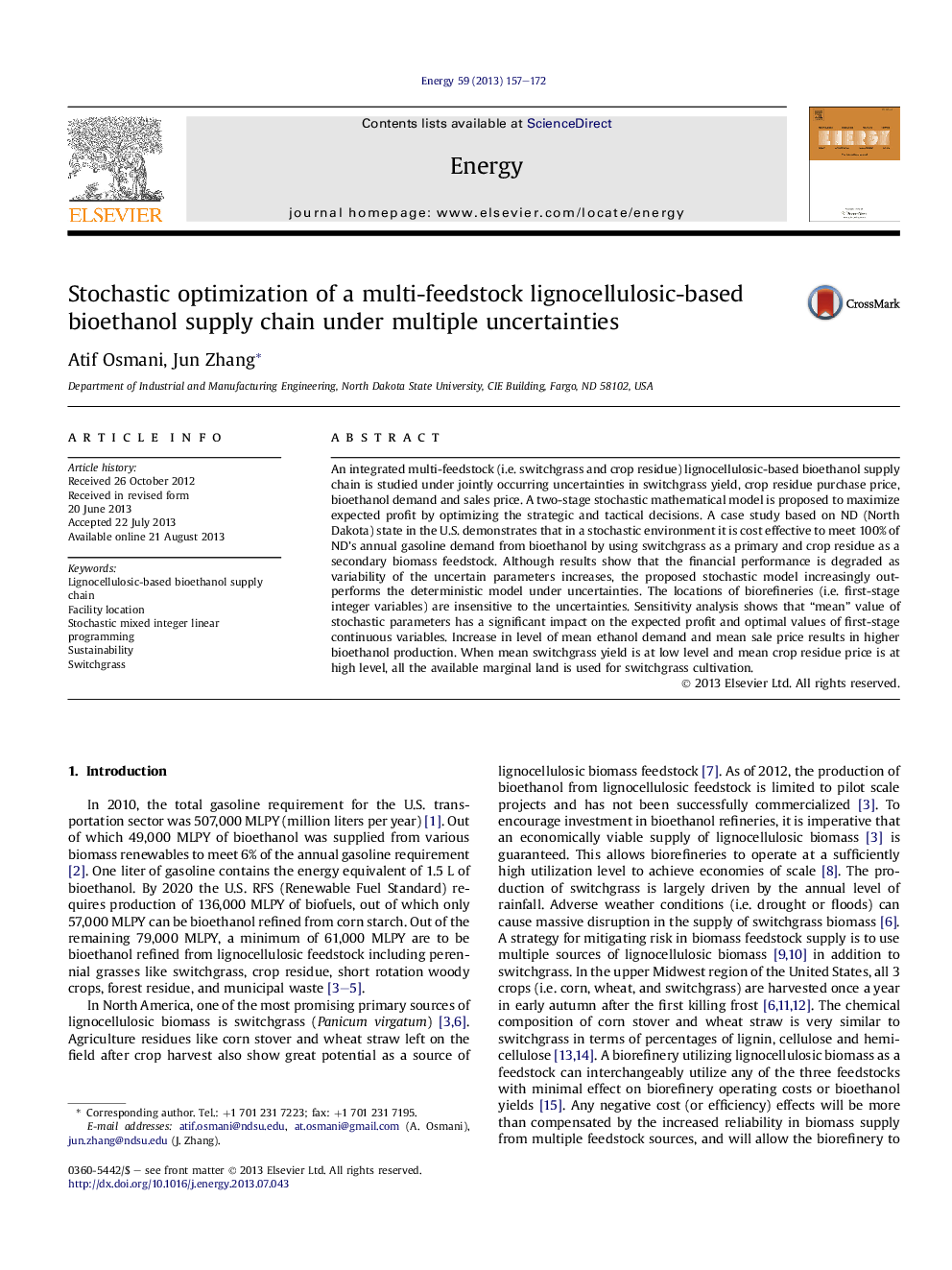| Article ID | Journal | Published Year | Pages | File Type |
|---|---|---|---|---|
| 8079196 | Energy | 2013 | 16 Pages |
Abstract
An integrated multi-feedstock (i.e. switchgrass and crop residue) lignocellulosic-based bioethanol supply chain is studied under jointly occurring uncertainties in switchgrass yield, crop residue purchase price, bioethanol demand and sales price. A two-stage stochastic mathematical model is proposed to maximize expected profit by optimizing the strategic and tactical decisions. A case study based on ND (North Dakota) state in the U.S. demonstrates that in a stochastic environment it is cost effective to meet 100% of ND's annual gasoline demand from bioethanol by using switchgrass as a primary and crop residue as a secondary biomass feedstock. Although results show that the financial performance is degraded as variability of the uncertain parameters increases, the proposed stochastic model increasingly outperforms the deterministic model under uncertainties. The locations of biorefineries (i.e. first-stage integer variables) are insensitive to the uncertainties. Sensitivity analysis shows that “mean” value of stochastic parameters has a significant impact on the expected profit and optimal values of first-stage continuous variables. Increase in level of mean ethanol demand and mean sale price results in higher bioethanol production. When mean switchgrass yield is at low level and mean crop residue price is at high level, all the available marginal land is used for switchgrass cultivation.
Related Topics
Physical Sciences and Engineering
Energy
Energy (General)
Authors
Atif Osmani, Jun Zhang,
